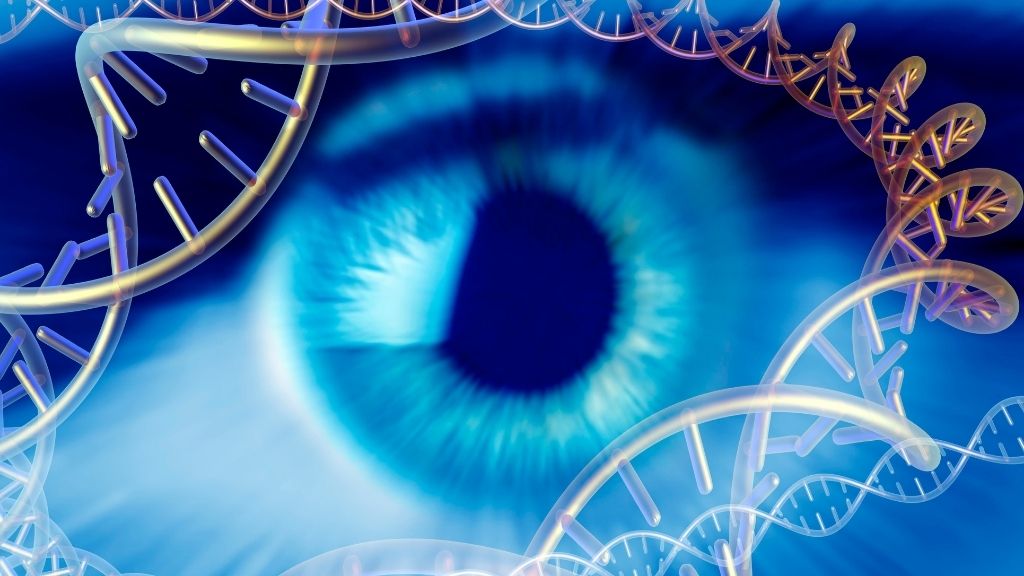Genes from algae helped a blind man recover some of his vision

A blind man who could only perceive the faintest bit of light can now perceive fuzzy shapes, thanks to gene therapy and a pair of specially engineered goggles.
The man was diagnosed with a condition called retinitis pigmentosa 40 years ago, at the age of 18, according to a new report, published Monday (May 24) in the journal Nature Medicine. People with retinitis pigmentosa carry faulty genes that, due to many mutations, cause the light-sensitive cells in the retina at the back of the eye to break down, according to the National Eye Institute (NEI).
These genes would usually code for functional proteins in the retina, but instead fail to build those proteins, or make abnormal proteins that malfunction or produce substances that directly damage the retinal tissue. The condition affects roughly 1 in 4,000 people worldwide, according to the NEI, and can sometimes lead to complete blindness, as occurred in the 58-year-old patient in the new study, BBC News reported.
Related: 12 amazing images in medicine
In an attempt to treat the man's vision loss, scientists inserted genes that code for a light-sensing protein into a modified virus, then injected those genetically tweaked viral vectors into one of his eyes, the researchers reported. The protein, called ChrimsonR, is a engineered version of a light-sensitive protein found in unicellular algae, which allows the single-celled organism to detect and move toward sunlight, MIT Technology Review reported.
ChrimsonR belongs to a family of light-sensitive proteins called channelrhodopsins, hence the added "H" in crimson, and has been modified to react to colors within the reddish end of the color spectrum, namely amber light. By injecting genes for ChrimsonR into the retina — specifically into retinal ganglion cells, a kind of nerve cell that sends visual signals to the brain — the team hoped to make these cells sensitive to yellow-orange light, MIT Technology Review reported.
Here's where the special goggles came in. The goggles pick up changes in light intensity from the environment and then translate that signal into an intense, amber image that gets projected straight onto the patient's retina, with the aim of activating ChrimsonR. Months passed before a significant quantity of ChrimsonR accumulated in the man's eye and began to alter his vision, but eventually, he began to perceive patterns of light with help from the goggles, BBC News reported.
Sign up for the Live Science daily newsletter now
Get the world’s most fascinating discoveries delivered straight to your inbox.
"The patient perceived, located, counted and touched" different objects using his treated eye, alone, and while wearing the goggles, the researchers wrote in the study. For instance, the patient could perceive a notebook and cups placed on a table in front of him, although when asked to count the cups he did not always give the correct number, according to MIT Technology Review.
Prior to receiving the therapy, the man could not detect any objects, with or without the goggles on, and following the injection, he could only see while wearing the goggles, since they convert all light into an amber hue, the researchers reported.
In addition to the notebook and cups, the patient reported being able to see the painted white lines at a pedestrian crossing, the BBC reported. "This patient initially was a bit frustrated because it took a long time between the injection and the time he started to see something," first author Dr. José-Alain Sahel, an ophthalmologist and scientist at the University of Pittsburgh and Institute of Vision in Paris, told the BBC. The patient began training with the goggles about 4.5 months after his injection and only started reporting improvements in his vision about 7 months after that, the team reported.
"But when he started to report spontaneously he was able to see the white stripes to come across the street you can imagine he was very excited. We were all excited," Sahel told the BBC.
Even now, the man's vision still remains fairly limited, in that he can only see monochromatic images and at a fairly low resolution. But "the findings provide proof-of-concept that using optogenetic therapy to partially restore vision is possible," senior author Dr. Botond Roska, founding director of the Institute of Molecular and Clinical Ophthalmology Basel at the University of Basel, told BBC News. ("Optogenetics" broadly describes the technique of using light and genetic modification to control the activity of neurons.)
Of course, although these initial results are exciting, the study is limited in that only one patient has received the treatment so far, James Bainbridge, a professor of retinal studies at the University College London who was not involved in the study, told the BBC.
Read more about the research in BBC News and MIT Technology Review.
Originally published on Live Science.

Nicoletta Lanese is the health channel editor at Live Science and was previously a news editor and staff writer at the site. She holds a graduate certificate in science communication from UC Santa Cruz and degrees in neuroscience and dance from the University of Florida. Her work has appeared in The Scientist, Science News, the Mercury News, Mongabay and Stanford Medicine Magazine, among other outlets. Based in NYC, she also remains heavily involved in dance and performs in local choreographers' work.









